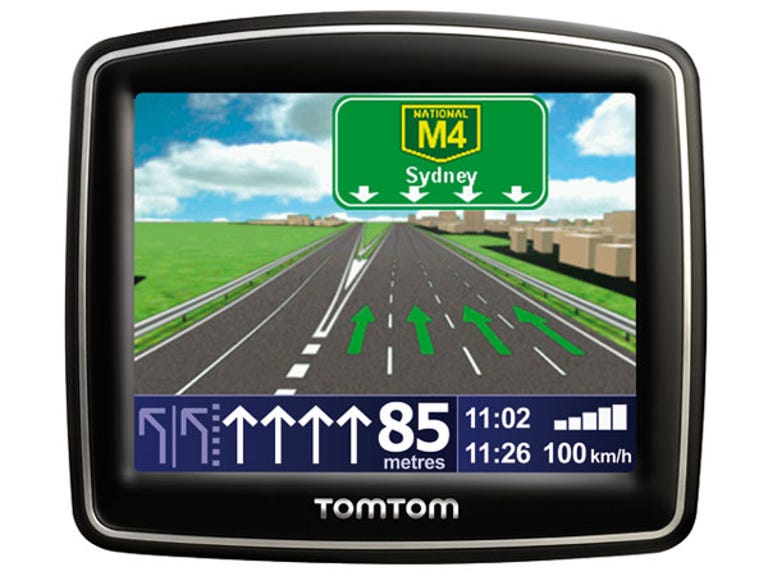 Why You Can Trust CNET
Why You Can Trust CNET TomTom One 140 review: TomTom One 140
Same, same but slightly better than before. Quicker responses and lane guidance justify slight premium over fourth-gen One.
Design
Aside from a body that is now almost exclusively a shade of matte black and the shiny black speaker grille gracing its derriere, the TomTom One 140 is identical to the fourth-generation One. That One soldiers on as the entry-level model at a RRP of AU$299, a price that will be cut further by retailers.
The Good
The Bad
The Bottom Line
Despite treading water, we're still fans of the One 140's design. It looks good, but more importantly its compact size allied with the EasyPort windscreen mount that affixes itself to the unit around the large rear speaker, folds up in a compact bundle, allowing it to all fit in even the shallowest of gloveboxes. Like many users have discovered, once the One is stuck on to the windscreen, care needs to be exercised when adjusting it for visibility. Pull at the device and it will merrily detach itself from the mount; to avoid this you need to grab both the One and the mounting bracket before attempting any viewing angle adjustments.
Feautres
Part of the One 140's compact dimensions derives from the fact that it sports a small 3.5-inch screen. Although down on the inch count, it's decent enough for map viewing, but entering locations via the on-screen QWERTY keyboard can be an exercise in frustration at times. Give it a try in store before you buy and if it's an issue for you, spend a bit more on the 4.3-inch version of the One, the XL 340.
With the body little changed, TomTom's engineers have beavered away at its innards. Underneath the One 140's emo outfit, you'll find a faster processor and double the amount of memory. These improvements lead to slightly snappier map refreshes, nearly instantaneous response to inputs and faster route calculation — a bonus for when you wander off course. While the menus have been jazzed up with a new set of icons and a more modern look, the maps remain the same as ever, which is to say functional but no more.
Excluding the usual set of Aboriginal names that get mangled up by tourists and text-to-speech engines alike, the spoken street names feature is quite decent. It's better than listening to a stream of generic "turn left in 300 metres" instructions and doesn't fall into the trap of saying "X4" instead of Parramatta Road. Although quite why it isn't selected by default is still a mystery to us. Making a welcome return is Map Share, which allows users to correct various map errors, including traffic direction, turn restrictions, blocked roads and street names. New streets can't be added, but corrections — once verified — can be shared with and downloaded from other TomTom users via the company's Home software.
The latest 2009 Whereis (R16) map should be shipped with One 140s in stores now. If, as with our review unit, it isn't, make use of TomTom's 30-day map guarantee by plugging the device into your PC or Mac, and then installing the Home software, which will then download the latest map gratis.
Performance
Two of the One 140's key selling points are the inclusion of IQ Routes and advanced lane guidance. The latter is a handy feature showing drivers suitable lanes for most multi-lane roads, as well as full-screen lane graphics and signpost information for highway on and off ramps. According to Whereis, lane guidance is available for Sydney, Melbourne, Brisbane, Adelaide, Canberra and Darwin, although oddly not Perth. IQ Routes, however, seems to still be more hype than benefit.
By collecting anonymous data, IQ Routes is meant to provide better routing by avoiding roads with low average speeds for a particular time of the day. In spite of its grandiose claims, the One 140 still happily lead us up constantly clogged major roads, the most egregious example of which is the car park known as King Street, Newtown on a Saturday afternoon. IQ Routes aside routing performance was OK — yes, there's still a preference for main roads, but within a few missed turns the One 140 will stop insisting on its preferred path and look for alternatives.
The large speaker provides good, clean loud sound even when the volume is turned up to painful. Like most portable GPS devices, the One 140 suffers from occasional signal drop outs and confused bearings in the middle of the concrete jungle. Although speed and red light camera locations come loaded as standard, drivers should still keep their wits about them as many newer cameras still aren't included and some warnings only come up when travelling in a certain direction.
Conclusion
If last year's One and XL were a revolution — in form factor, at the very least — this year's line-up is slowly and steady evolution. The question then is: is it worth the extra AU$50 over last year's One? With its faster processor and the inclusion of lane guidance the answer is yes. Just.


